Nokia Lumia 1020 review
Kunal Dua,
October 18, 2013
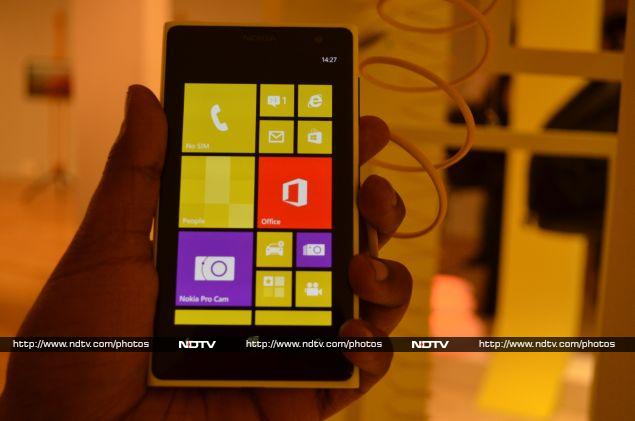
The Lumia 1020 is the spiritual successor to Nokia's first phone with a 41-megapixel camera sensor, the Nokia 808 PureView. While the 808 won rave reviews for its camera, the fact that it ran the dated Symbian operating system on underpowered hardware had many wondering - "What if this phone (rather, this camera) ran Windows Phone?" In that respect, the Nokia Lumia 1020 is the realisation of a dream that many have harboured since using the 808.
Sadly, many dreams shatter on their first contact with reality. Is the Lumia 1020 one of those dreams or does this story have a happy ending, let's find out.
Build/ Design
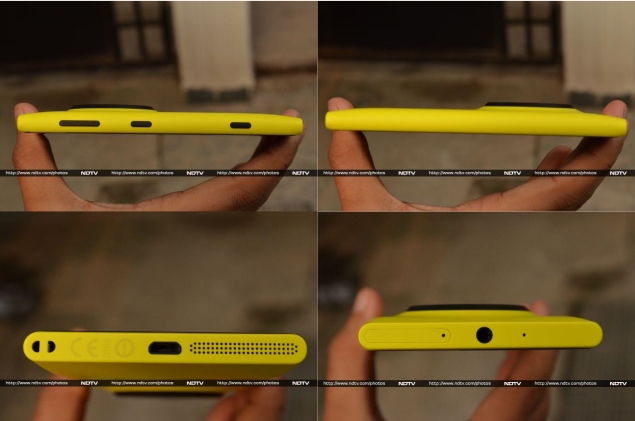 Nokia Lumia 1020 inherits characteristics of other members of the
Lumia family, with a polycarbonate body that looks and feels premium.
The layout of buttons and other ports is pretty standard as well, with
the volume controls, power and dedicated camera buttons on the right
edge. The top edge has the headphones port and the micro-SIM slot, while
the bottom has the Micro-USB port, loudspeaker and a lanyard slot. The
three standard Windows Phone buttons lie below the display and the
Search button is as useless as ever, pointing to Bing instead of
universal search, a long-standing gripe of ours with Windows Phone
devices.
Nokia Lumia 1020 inherits characteristics of other members of the
Lumia family, with a polycarbonate body that looks and feels premium.
The layout of buttons and other ports is pretty standard as well, with
the volume controls, power and dedicated camera buttons on the right
edge. The top edge has the headphones port and the micro-SIM slot, while
the bottom has the Micro-USB port, loudspeaker and a lanyard slot. The
three standard Windows Phone buttons lie below the display and the
Search button is as useless as ever, pointing to Bing instead of
universal search, a long-standing gripe of ours with Windows Phone
devices.The back of the Lumia 1020 looks different from its Lumia cousins, thanks largely to the 41-megapixel camera module that sticks out of the back. However, the bulge is not as big a problem with the 1020 as it was with the Nokia 808 PureView. The 808 was not the easiest phone to carry around, measuring 13.95mm at its thinnest and 17.95mm thick at the camera module. The Lumia 1020, however, is just 10.40mm at its thickest (you guessed it, the camera module), and the bulge as compared to the rest of the body is not as pronounced as the one in the 808. However, the phone is unable to lie flat on its back; instead it rests at an angle that makes it easier to glance the screen if you are looking from front, an unintended benefit. The phone weighs 158 grams, but doesn't feel too heavy.
The Lumia 1020 is available in Black and White colour options, in addition to the Yellow that we received as our review unit.
Display
 The Nokia Lumia 1020 comes with a 4.5-inch (768x1280 pixel)
ClearBlack AMOLED display with Corning Gorilla Glass 3 and a pixel
density of 334 pixels per inch. While the resolution and pixel density
might be dwarfed on paper when compared to the likes of HTC One,
in real world usage, most are unlikely to notice a difference. The
display on the 1020 is bright and the colour reproduction closer to the
real world when compared with most other AMOLED displays, similar to
what we noted in our Nokia Lumia 925 review.
The Nokia Lumia 1020 comes with a 4.5-inch (768x1280 pixel)
ClearBlack AMOLED display with Corning Gorilla Glass 3 and a pixel
density of 334 pixels per inch. While the resolution and pixel density
might be dwarfed on paper when compared to the likes of HTC One,
in real world usage, most are unlikely to notice a difference. The
display on the 1020 is bright and the colour reproduction closer to the
real world when compared with most other AMOLED displays, similar to
what we noted in our Nokia Lumia 925 review.Nokia claims that its ClearBlack technology ensures that users see truer blacks, which in turn enhances the contrast of the display, thanks mainly to reduced reflections on the screen. The result is a screen that is easy to use, even in bright sunlight.
The screen comes with Nokia's super sensitive touch technology which means that the touchscreen can be operated even while wearing gloves or by using a pen as a stylus.
Camera
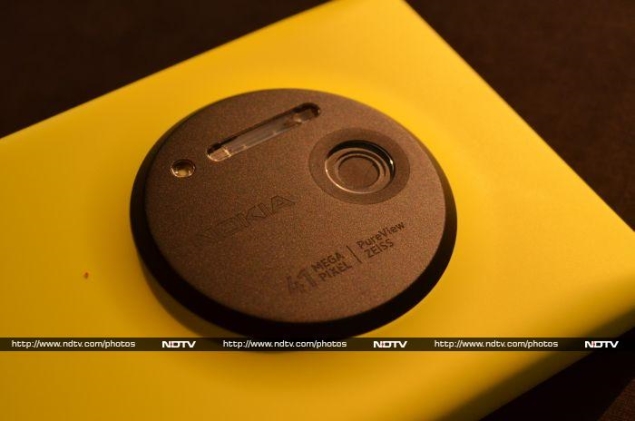 Needless to say, the highlight of the Nokia Lumia 1020 is its
41-megapixel camera, so we'll be focusing most of our energy on this
section. While the sensor inside the Lumia 1020 is 41-megapixel, the
pictures it clicks are either 38-megapixel or 34-megapixel, depending
upon if you are clicking pictures in 4:3 mode or 16:9, similar to what
we saw in the Nokia 808 PureView. If you are curious why this is the
case, refer to our Nokia 808 review for a detailed explanation.
Needless to say, the highlight of the Nokia Lumia 1020 is its
41-megapixel camera, so we'll be focusing most of our energy on this
section. While the sensor inside the Lumia 1020 is 41-megapixel, the
pictures it clicks are either 38-megapixel or 34-megapixel, depending
upon if you are clicking pictures in 4:3 mode or 16:9, similar to what
we saw in the Nokia 808 PureView. If you are curious why this is the
case, refer to our Nokia 808 review for a detailed explanation.Nokia Lumia 1020 packs in a six-element lens array and a BSI (Back Side Illuminated) sensor, a shift from the five-element lens array and FSI (Front Side Illuminated) sensor found in the 808. It also comes with a wider f/2.2 aperture, compared to the f/2.4 in the 808. Another significant improvement in the 1020 is the addition of Optical Image Stabilisation that has been found to be working really well on the likes of Nokia Lumia 925.
While Nokia has worked hard to improve the hardware behind the camera, the software side seems to have regressed a bit. The default camera app on the Lumia 1020 is Nokia Pro Cam that seems to be lacking a few options found in the year-old Nokia. With the 808 you could choose to simultaneously click photographs in 2-megapixel, 3-megapixel, 5-megapixel or 8-megapixel effective resolutions, in addition to 34-megapixel or 38-megapixel full blown images. With the 1020, however, you are limited to a 5-megapixel image in addition to the 34-megapixel (16:9 mode) and 38-megapixel (4:3 mode) full-sized image.
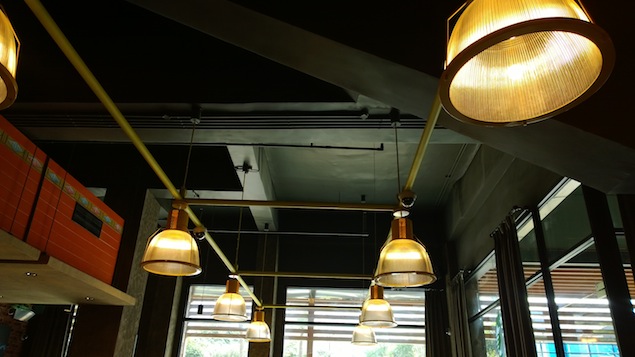 Further, you get to see only the 5-megapixel version of your images
while browsing the gallery, and the photos that get automatically
uploaded to SkyDrive (should you chose to do so) are 5-megapixel. While
it's understandable that Nokia doesn't offer the option of uploading
full-resolution images over cellular data, an option to have these
photos saved to SkyDrive over Wi-Fi could've been provided as a
workaround. In fact, the only way to even see the full-resolution images
on the phone is to open them for editing within the app. Even then, you
have to crop the image to a smaller size to do anything meaningful with
it, like sharing. Alternatively, you can connect the phone to a PC,
when you'll get to see that every photo clicked using Nokia Pro Cam in
the dual 5-megapixel and 34-/38-megapixel mode, actually has two images
corresponding with it.
Further, you get to see only the 5-megapixel version of your images
while browsing the gallery, and the photos that get automatically
uploaded to SkyDrive (should you chose to do so) are 5-megapixel. While
it's understandable that Nokia doesn't offer the option of uploading
full-resolution images over cellular data, an option to have these
photos saved to SkyDrive over Wi-Fi could've been provided as a
workaround. In fact, the only way to even see the full-resolution images
on the phone is to open them for editing within the app. Even then, you
have to crop the image to a smaller size to do anything meaningful with
it, like sharing. Alternatively, you can connect the phone to a PC,
when you'll get to see that every photo clicked using Nokia Pro Cam in
the dual 5-megapixel and 34-/38-megapixel mode, actually has two images
corresponding with it.Having said that, Nokia Pro Cam offers plenty of control to experienced users letting them adjust the exposure, shutter speed, ISO, white balance and, of course, focus as per their needs. This can be done using controls at the top right (while holding the phone in landscape mode) of the screen or by dragging the on-screen click button to the left to reveal a grid of circular lines. The app also gives a live preview of how the resultant image would look when you, say, adjust the white balance. The app also offers options for shutter delay and exposure bracketing, which can be used for creating manual HDR images.
 Coming back to the in-app editor that we touched upon briefly, it
lets you open full-resolution images and zoom in and out to get exactly
what you were looking for. This works pretty well and is a good way of
discovering details that perhaps weren't even visible to the naked eye
while clicking the photograph. As While cropping the image, called
reframing, you even have the option to change its aspect ration to one
of 3:2, 1:1, 4:3 or 16:9. This is 'lossless zoom' as Nokia intended.
Coming back to the in-app editor that we touched upon briefly, it
lets you open full-resolution images and zoom in and out to get exactly
what you were looking for. This works pretty well and is a good way of
discovering details that perhaps weren't even visible to the naked eye
while clicking the photograph. As While cropping the image, called
reframing, you even have the option to change its aspect ration to one
of 3:2, 1:1, 4:3 or 16:9. This is 'lossless zoom' as Nokia intended.Perhaps the biggest downside of the Nokia Pro Camera app is the 3-4 seconds time that it takes to save a photo. We initially believed it was down to the fact that the app is saving high resolution photos in addition to the 5-megapixel shots, but even switching to 5-megapixel mode only made the process only marginally faster. It seems all that oversampling involved is taking its toll on the phone, leading to the lag. Add to this the fact that the app takes around 2-3 seconds to be ready to click a photo when launched, and it means that if you are looking to capture a moment in a hurry, you are better off sticking to the native Windows Phone Camera app, which is must faster to load and does not lag while capturing either. Once we realised this, we mapped our hardware camera button to open the native Camera app and left Nokia Pro Camera on our home screen. This made our journey from the lock screen to capturing much faster.
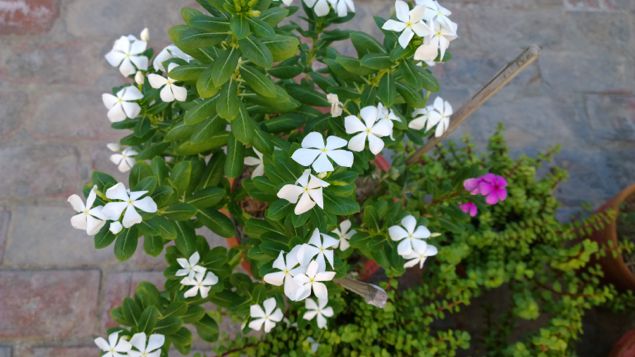 Nokia Pro Cam is one of the many camera apps (or lenses as they are
called in Windows Phone) installed on the Lumia 1020 and that can be a
little confusing for users. You can switch to any of these apps by
clicking the switch lens button on the bottom right of the screen, but
remember that only the Nokia Pro Cam can take 34-/38-megapixel pictures.
The other lenses (apps) that the Lumia 1020 ships with are Bing Vision,
Camera360, the default Windows Phone Camera, Nokia Cinemagraph, Nokia Smart Cam, Panorama and Vyclone.
Nokia Pro Cam is one of the many camera apps (or lenses as they are
called in Windows Phone) installed on the Lumia 1020 and that can be a
little confusing for users. You can switch to any of these apps by
clicking the switch lens button on the bottom right of the screen, but
remember that only the Nokia Pro Cam can take 34-/38-megapixel pictures.
The other lenses (apps) that the Lumia 1020 ships with are Bing Vision,
Camera360, the default Windows Phone Camera, Nokia Cinemagraph, Nokia Smart Cam, Panorama and Vyclone.Nokia Smart Cam clicks a series of photos in burst mode and then recommends the best photo(s). It even lets you mix and match elements from different shots to come up with the perfect shot. Vyclone is a video editing tool, Cinemagraph lets you create small animations from your images, while Camera360 lets you apply various effects to your photos and share them on various social networks. As we noted in our Lumia 720 review, Panorama lens is perhaps the worst way to create panoramic pictures we've come across in recent times and, sadly, nothing's changed on that front.
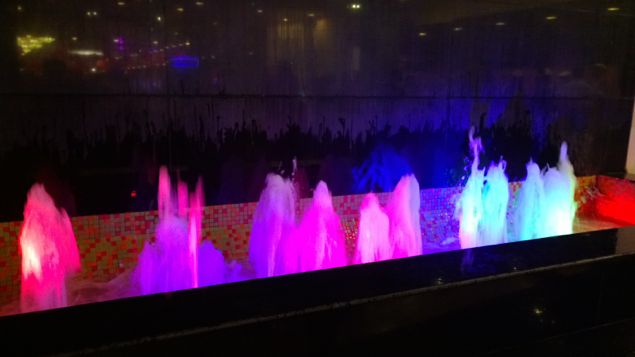 If, like most smartphone users, you click photos in full-auto mode,
trusting the phone to take the best decisions for you in terms of
settings, then you'll find that the pictures clicked by the Lumia 1020
are a bit of a hit and miss. When the PureView gods are smiling on you
and everything falls into place, the resultant images are crisp and have
plenty of detail. However, on several occasions we found the images
clicked by the phone to lack detail, when compared to ones clicked by
the iPhone 5s and even the year-old iPhone 5.
If, like most smartphone users, you click photos in full-auto mode,
trusting the phone to take the best decisions for you in terms of
settings, then you'll find that the pictures clicked by the Lumia 1020
are a bit of a hit and miss. When the PureView gods are smiling on you
and everything falls into place, the resultant images are crisp and have
plenty of detail. However, on several occasions we found the images
clicked by the phone to lack detail, when compared to ones clicked by
the iPhone 5s and even the year-old iPhone 5.Having said that, if you feel right at home adjusting the likes of exposure settings and white balance before hitting that camera button, you'll find the Lumia 1020 to be a delight. Images clicked in manual mode turn out as good, if not better than any other smartphone out there.
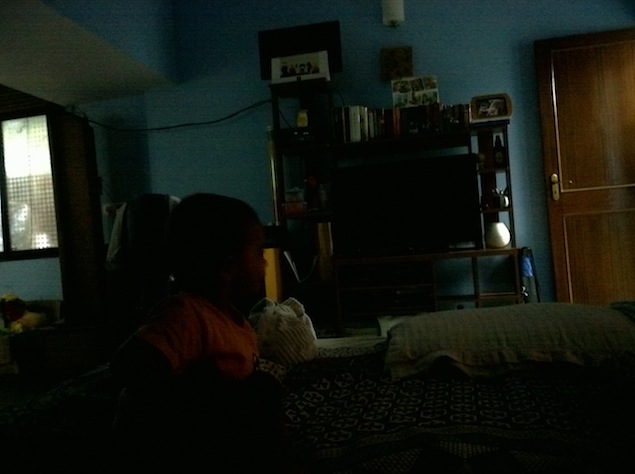 Low-light photography is pretty good as well, and we dare say more to
our taste than the likes of Lumia 925 that have a way of capturing
stuff that even human eye can't see. Call us crazy, but we find that a
little unnerving. While we are on the subject, though we have a strict
no-flash policy while capturing photos, we realise that most people
never change away from the Auto mode, and thus put the flash to good
use. There's good news on that front as the Xenon flash on the Lumia
1020 is perhaps the best we've come across date. The flash lights up the
subjects in an even and powerful fashion, minus the glare that is
associated with a typical flash.
Low-light photography is pretty good as well, and we dare say more to
our taste than the likes of Lumia 925 that have a way of capturing
stuff that even human eye can't see. Call us crazy, but we find that a
little unnerving. While we are on the subject, though we have a strict
no-flash policy while capturing photos, we realise that most people
never change away from the Auto mode, and thus put the flash to good
use. There's good news on that front as the Xenon flash on the Lumia
1020 is perhaps the best we've come across date. The flash lights up the
subjects in an even and powerful fashion, minus the glare that is
associated with a typical flash.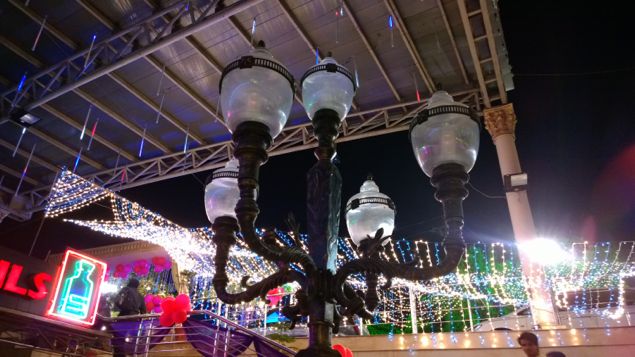 Another thing that the Lumia 1020 has going in its favour is the
large field of view compared to most other phones. This means that the
phone is able to capture an image that is wider as well as taller than
most smartphones.
Another thing that the Lumia 1020 has going in its favour is the
large field of view compared to most other phones. This means that the
phone is able to capture an image that is wider as well as taller than
most smartphones.The Lumia 1020 is capable of recording full-HD (1920 x 1080) videos at 30 frames per second. The quality of videos is excellent, with Nokia's Rich Recording technology earning its money with an ability to capture crisp audio even in noisy outdoor conditions.
The front camera can capture 720p video and is as capable front shooter as we've come across in a smartphone.
Software
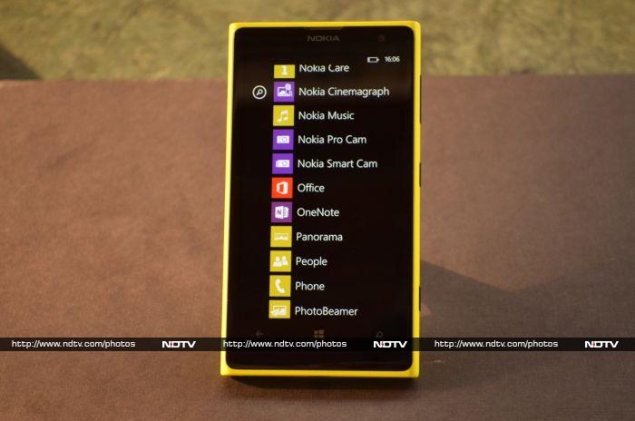 Nokia Lumia 1020 comes with the Windows Phone 8 Amber update and the
overall software experience is no different from its siblings. Nokia
bundles many of its own apps to enhance the core Windows Phone
functionality, and we've documented our fondness for the Drive app
before, which we believe is a worthy competitor to Google Maps. For a
detailed look at the Amber update and the new features/ apps that it
brings, please refer to our Lumia 625 review.
Nokia Lumia 1020 comes with the Windows Phone 8 Amber update and the
overall software experience is no different from its siblings. Nokia
bundles many of its own apps to enhance the core Windows Phone
functionality, and we've documented our fondness for the Drive app
before, which we believe is a worthy competitor to Google Maps. For a
detailed look at the Amber update and the new features/ apps that it
brings, please refer to our Lumia 625 review.The most notable additions in the 1020 to the apps that are available in other Lumia smartphone apps are the imaging-related apps that we've covered in the Camera section above.
Overall, the Amber update doesn't do anything to address many of our complaints related to Windows Phone like the lack of a notification centre or the fact that platform is still not a priority for developers, as shown by the absence of apps like Instagram. Even popular apps like Facebook that have a presence on Windows Phone lack features compared to their iOS or Android counterparts.
Performance/ Battery Life
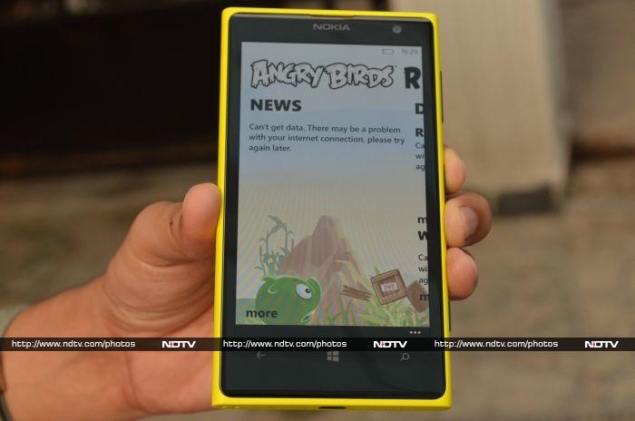 Windows Phone 8-based smartphone rarely have performance issues, and
the Lumia 1020 is no exception. It is powered by a 1.5GHz dual-core
Qualcomm Snapdragon S4 processor alongside 2GB RAM that handles
everything you throw at it pretty smoothly, other than the lags in the
Nokia Pro Cam we talked about earlier - whether beefed up hardware
would've minimised the delay or if that's entirely a software issue, is
something Nokia would know best.
Windows Phone 8-based smartphone rarely have performance issues, and
the Lumia 1020 is no exception. It is powered by a 1.5GHz dual-core
Qualcomm Snapdragon S4 processor alongside 2GB RAM that handles
everything you throw at it pretty smoothly, other than the lags in the
Nokia Pro Cam we talked about earlier - whether beefed up hardware
would've minimised the delay or if that's entirely a software issue, is
something Nokia would know best.Browsing is good, and the web pages render quickly, but yet again we run into Windows Phone 8 limitations like the fact we can't have more than 6 tabs open at the same time. On a machine with plenty of RAM, that seems artificially crippling. All games and apps we tried run smoothly, but then there are no Infinity Blade-equivalents on Windows Phone to push the hardware to its limit, so other than a few games that require a certain amount of RAM to run, the experience on a phone like the 1020 is not very much different from its entry-level Windows Phone siblings.
The Lumia 1020 comes with 32GB of non-expandable storage, with 29.12GB available for the end user. While that seems like plenty of storage, on a phone that captures large-sized images, an option to have expandable storage would've been nice. In case you are wondering, the 1020 comes with FM radio support, which can be utilised thanks to the pre-installed Amber Update.
For most users, the Nokia Lumia 1020 would easily last a day on a single charge, even if connected to a 3G network throughout. However, if you go on a clicking spree during the day, you will find yourself reaching for the charger quicker than you may think.
Verdict
Nokia Lumia 1020 is priced at Rs. 49,999 which makes it slightly more expensive than the Samsung Galaxy Note 3, and considerably pricier than other flagship devices like the Samsung Galaxy S4, HTC One, Sony Xperia Z1 and Sony Xperia Z Ultra. Nokia can thank Apple for small mercies, which announced a Rs. 53,500 price tag for the iPhone 5s earlier this week, making the Lumia 1020 the second-most expensive smartphone available right now.
It is fair to say, that as far as the overall experience is concerned, the Lumia 1020 is inferior to all other smartphones mentioned above. If you are willing to spend Rs. 50,000 on a smartphone, you don't need to look beyond the iPhone 5s, which is superior to the Lumia 1020 in all respects, and as we noted in our Camera section, perhaps a better everyday camera for most users, despite 1020's obviously superior imagining capabilities that need an experienced hand to make the best use.
We've documented shortcomings of Windows Phone earlier, and the Lumia 1020 inherits all of them, with the OS only now getting ready to support full-HD screens and other top of the line specs that have been found in Android phones for a while. You can argue that the iPhone 5s doesn't compete on specs either, but the app ecosystem and overall experience on iOS is unrivalled. So if Windows Phone doesn't compete on hardware, the ecosystem, and, with the 1020, not even the price, it's hard to make a strong case for it.
Yes, shutterbugs will love the Lumia 1020 camera, but at the price tag one has to wonder if they are perhaps better off buying a point-and-shoot camera, which are getting smaller, easier to carry bodies and bigger sensors, and a mid-level smartphone. If you want one that runs Windows Phone, pick the Nokia Lumia 720, which is still our favourite Windows Phone running device, or the Nokia Lumia 920 which is now reportedly available at heavy discounts compared to its launch price.
Price: Rs. 49,999
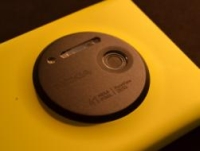
No comments:
Post a Comment